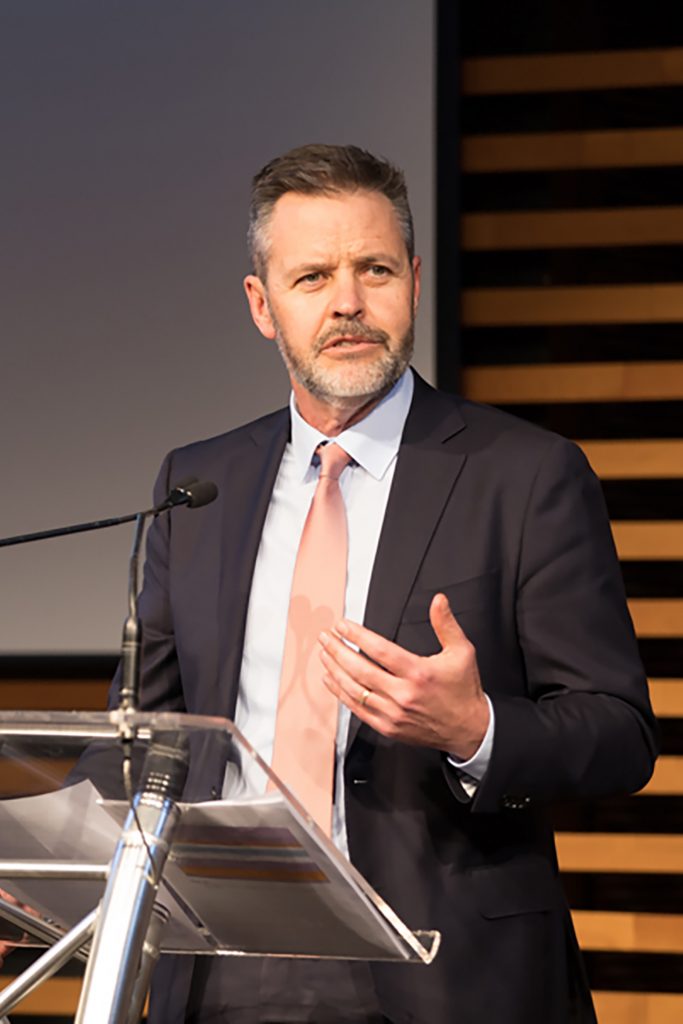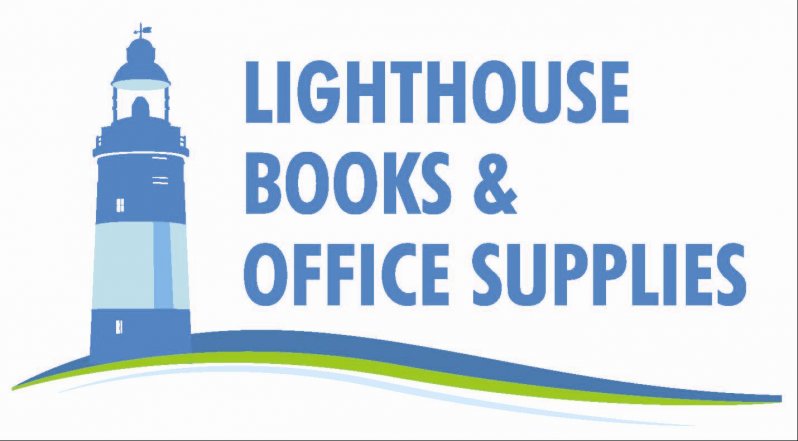Interview with Rick Persse: the relationship between secondary principals and DfE
5th August 2021
Recently, the Chief Executive was kind enough to be interviewed on the relationship between the secondary principal and the Department. While the interview was at SASPA’s request the following comments on the role of the secondary principal also relate more generally to principals and pre-school directors across the system.
Not surprisingly, the focus of the secondary school principal is on their school, specifically it is on their leadership of their school. Principals are appointed to a particular school and the school becomes identified with the current principal. If there is success at the school, the focus will be on the principal. Equally, if there are ‘issues’ at the school, the focus will as quickly turn to the principal. In the community, people want to know who the principal is and what ‘they are like’.
Principals see themselves responsible for the overall academic performance of their school as well as the broader personal development and wellbeing of the students. They see themselves as ‘instructional leaders’ responsible for the quality of teaching and learning in their school. Equally, they see themselves responsible for the culture of the school. They are also responsible for the efficient management and running of the school. In their leadership role, they must discharge significant legal responsibilities in relation to the protection of children and young people and the overall safety and welfare of both their students and staff. They see themselves responsible for relations with the parents and wider school community. … The list of essential and desirable outcomes tied to the role of principal could be extended; but the critical point is that all such outcomes relate to the particular school for which they, as the principal, are responsible. Importantly, even though they are operating in a state system of education, the principal’s immediate focus is their school.
With their responsibilities tied so directly to their particular school, and their sense of everyday reality taken up so completely with their school, it is hardly surprising that, even though they operate in a system of schooling, principals can ‘forget’ that they are part of the system. The relationship to the Department is shifted to the background, perhaps even ‘taken for granted’. Indeed, some principals might wish to make a virtue of minimising the relationship with the Department. They might want to emphasise the uniqueness and success of their school and the apparent degree of autonomy they have as principal of the school. However notions of principal autonomy and the ‘independent’ high school are fraught and, historically, always have been in a state system of schooling.
As an aside, the CE referred to the famous ‘Freedom and Authority Memorandum’ of 1970. He was not sure that any CE – or Director General as was the case then – could assume that in a system of education all principals could easily handle more ‘autonomy’ and would even request it. Nor was he sure what such autonomy would look like in a contemporary system of state education. In fact, it is fair to argue that the famous memo was more a statement about ending the previous century of highly centralised, tightly constraining, bureaucratic control over schools, and their principals – control which ran right down to the minutiae of daily life in schools – than it was about any bold new vision of autonomous schools and principals.
Arguably, a more recent and relevant example of ’delegated autonomy’ for principals was ‘Partnerships 21’, 20+ years ago. P21 represented the last significant occasion in SA when the relationship between the principal of the individual school and the Department was put under the political microscope and a different model was offered. As a government initiative, P21 was supposed to offer increased autonomy for the principal of the school. The principal was offered increased control over the school’s human, financial and site resources. Much was made of the promise of the principal’s increased ability to control the staffing of their school. Within limits, schools were to be given the opportunity of trying new approaches to better align their priorities with the needs of the local community. Decision-making was to occur at the local level. The school’s leadership and management was to be more closely tied to its local community via an enhanced ‘governing council’, as opposed to the conventional ‘school council’.
While some schools were keen to embrace the opportunity, the more telling point was P21 did not usher in some bold new relationship between the Department and the individual state school. The more traditional arrangement between the school and the centre remained largely intact. It seemed many principals were not persuaded by the promise of increased ‘autonomy’. The reasons why P21 was not embraced wholeheartedly by principals at the time are instructive. Some argued that P21 was not so much an attempt to boost principal autonomy and decision-making at the local level but, rather, a means to shift significant administrative pressures and costs from the centre to the individual school. The AEU was resolute in its opposition to P21 and some principals saw little relative merit in taking on an industrial dispute and stirring conflict with their staff. Also, many principals were wary that P21 represented some sort of ‘thin edge of the wedge’ for the ‘privatisation’ of state schooling; and even if this fear was overblown, there was genuine concern that P21 did pose significant threat to the state system. Much was made of the belief that there would be ‘winners and losers’ from the scheme, and that this possibility represented some kind of existential threat to the basic principles of equity, inclusivity and of course, the ‘uniformity’ and ‘commonality’ that characterise state systems of education.
Without wanting to make too much of the brief P21 interlude, the reality was that, offered the possibility of increased autonomy, an even closer relationship with the school’s local community and more administrative independence from the centre, many secondary principals demurred. Overall, the history suggests that as successful as an individual school can become, as much as principals can identify with the success and character of their particular school and promote the ‘uniqueness’ of their school, and as much as parents want to see their local school as some sort of quasi ‘independent’ school or college (without the fees), there is no widespread support from secondary principals for any substantial challenge to the current system of state schooling in SA. At the same time, the relationship between the principal and the Department is the most critical one in the state system, and the strength and effectiveness of the relationship needs to be constantly reviewed and developed. It can always be improved.
Against this background, it is worth pursuing the views of the Chief Executive on the fundamental relationship between the secondary principal and the Department.
The CE certainly accepts the role of the secondary principal as leader of the school, in that he sees both the school’s performance and its culture as the responsibility of the principal. The principal is ‘responsible’ in the sense that they are accountable for the two key outcomes and they possess the required leadership both to shape and improve them. He sees the principal as the very public face of the school and understands the way the local community identifies the school with the principal. He sees the support and respect that the principal is able to win from the local community as a critically important asset, both for the school and the wider system.
The CE also recognises the significant difference a principal can make to a school. He accepts that neither general improvement nor specific results are instant, and that it can take time to ‘turn around’ or improve a school. It also takes time for principals to establish themselves in their schools: to acquire the experience, reputation and gravitas that have to go with the role. On this score there is a continuum – from the beginning principal to the principal established in their schools for many years; and even from the principal known only in their school to the principal well known across the system. And given the range of experience, the CE also understands that there needs to be a range of support available from the centre. As he put it, some principals – experienced, successful, established in their schools for many years – will only need ‘light touch’ support. He referred to this as ‘earned autonomy’. Nor did he want the Department to be any sort of ‘rate limiter’ to what the school could achieve. At the same time, other principals beginning in the role need to be reassured that considerable support from District Directors and Local Education Teams is available. He insisted repeatedly that principals must not be left without support. Nor does he believe that it is a sign of failure or weakness to seek support or acknowledge difficulties.
In fact, on the specific issue of support being made available for the principal, the CE’s strong view, made repeatedly, was that the Department’s key responsibility is to support principals. His repeated mantra was that the Department was there to support schools and their principals. His view is that while the principal is the ‘front person’ for the school community, there has to be a very significant and powerful network of support behind the principal. He noted that often this support remains unseen. He was adamant that the principal must not be left in a vulnerable position.
This imperative was not merely in relation to beginning principals. The CE insisted that even established and highly experienced principals can suddenly find themselves in difficult and very challenging situations, including situations that extend beyond their own school and, in fact, relate to many if not all schools in the system. Such situations, he noted, saw an incredible amount of ‘behind the scene’ support for the principal. He referred to the need to ‘scaffold’ such support. He also made the point that the focus had to be supporting the principal rather than, as it were, having the Department come in and take over. The focus has to be on protecting and promoting the role of principal. Again, there was this recognition of the primary role of the school principal in the school community. The focus also obviously reflects the extent to which the Department needs and must rely on the work of the principal.
The CE certainly gave the impression that he saw himself as having very direct and immediate links with principals. He sees his contact with principals going well beyond any formal, hierarchically mediated relationship via other Departmental officers and agencies. He spoke of his extensive program of school visits and the importance he attaches to the opportunity to have a one-on-one meeting with the principal. He also noted that the school system in SA is of a size where he could know the name of every principal and preschool director. He found that Initially principals tended to view such visits as some kind of semi-formal ‘inspection’ but that over time they have come to see the visits as a critical opportunity to describe exactly the key issues that are affecting the school and their leadership. He acknowledged that such a direct relationship could compromise more traditional lines of communication, between for example the District Director and the Principal, but he reiterated that the key objective was that the principal always received the support they needed, with the issue of the appropriateness of communications being secondary to the identification of urgent needs or problems and the provision of relevant support, in the most timely manner possible. The CE pointed to the increased capacity at the Education Director level that he had provided for principal support. He also referred to using former principals in the role of ‘coaches’ or ‘leaders advisers’ to provide additional support. The CE spoke at length of the challenges facing principals, and not just beginning principals, in country schools, particularly in relation to staffing. In fact, he noted the inherent danger of allowing the development of an ‘Adelaide-centric’ perspective of schooling and he spoke about the need the need to support country schools in such critical areas as technology.
The CE also highlighted the extent to which he was ‘lobbied’ in his role. Obviously, such activity can take many forms and play out across a diverse range of perceived needs. It can cover the needs of the particular school, the needs of one school relative to the needs of another, the pressing issues facing rural schools as opposed to those in the city and metro areas, the needs of secondary over primary schools … The potential for pressure points, the need for compromise and the exercise of negotiated and ‘hard’ decisions are apparently endless. There is also the more formal representation from specific bodies, including, for example, SASPA itself. The CE stated that he took the work of and input from both SASPA and SAPPA very seriously. In terms of formal negotiations with bodies like the AEU, the CE expressed the view that, as difficult as they might become, they should always be conducted with mutual respect and decency. The CE also made the point that it was sometimes difficult in all the various forms of lobbying and negotiation to establish whose interests were really being advocated and represented. There were very many ‘voices’. Often the voices were in direct competition with each other and the CE joked that he knew he simply could not please everyone or have everyone onside. This reality added to his push to talk directly and openly to as many individual principals as possible. He saw himself as having a keen insight on critical issues affecting principals and schools. He is always prepared to set up specific interest/advisory groups involving principals to tackle critically important emerging issues. He gave as an example the work supporting the introduction of Year 7 to high school.
The CE spoke about relying on principals to vet new Department policy and resources. He recognises the need to involve principals, including former principals, in this type of work, right down to checking the appropriateness of the language employed in relevant materials. This degree of involvement and checking gives him confidence in the materials and directions produced by the Department.
The CE also spoke of his intention to support principals by giving them more certainty and security in their role. Specifically, he referred to his introduction of an effective ‘roll over’ mechanism in their position at the end of their tenure. If it was readily apparent that the principal had the confidence of the school community and that their leadership had been effective in improving school performance, the CE believed that their tenure should be extended, via a simplified, formal process. He believed this should be done to reduce pressure on the principal and minimise disruption to the school. At the same time, he did not believe that, as it were, a principal’s appointment should be ‘open-ended’. Even for the most successful principal, he believed that there should be a limited time spent in the one school. In fact, a common theme to emerge in the interview was the notion that all leaders in the Department, from himself as Chief Executive to the individual principal, were ‘custodians’ of the system and that personnel change was both inevitable and desirable. In terms of longevity, the CE, whose position has recently been extended, is now the longest serving Department head over the past 2 decades and he is conscious that such stability has benefited the Department and provided the opportunity for long-term change and improvement. Equally, he acknowledged the length of service of some secondary principals and commented on the benefits such lengthy service had brought, both for the individual school and the wider system. He was also aware of the length of time it took to effect significant change in schools. But, at the same time, he reiterated that in the interests of the system no one’s position was guaranteed in some form of perpetuity. The system had to reserve the options of change and renewal.
It is also worth remembering that while the CE focuses on maintaining close, respectful and significant contacts with principals, the legislative relationship between the CE and principals is ultimately a hierarchical one. While the principal is held accountable for the performance of the individual school, the CE is ultimately held responsible for the performance of all the schools in the system. It is the CE who has both authority and responsibility to set the priorities, targets, strategies, policies … for the system. Obviously, he discharges such responsibilities by close, collegial contact with principals – and effectively little can be achieved without their support – but it is the CE who is ultimately responsible to the government of the day.
Essentially, as collegiate, consultative and collaborative as the CE may choose to be in his working relationship with principals – and, obviously, there are very positive and powerful reasons for such a productive relationship – the legislative and political realities mean that it is the Minister and CE who have the power and responsibility to drive the educational agenda. Equally, the CE has the power and responsibility to deliver the required educational outcomes across the entire system. He must protect the status, integrity and credibility of the entire system; and any school that underperforms effectively compromises the value and status of the system. The CE has the authority to tackle both the underperforming school and the underperforming principal. He described how his own leadership style was to use the mandate of his position ’sparingly’. At the same time he noted that he had used it and always would when required and when it was the best ‘mechanism’. He added, ‘being a hammer and walking around like everything is a nail … is not, in my judgement, the best leadership approach.’
One strong impression to emerge was that the CE sets great store by being informed about what is going on right across the system. It is probably a case of micro-managing an entire system rather than a single school. He needs and wants to know where the ‘problem points’ and ‘blockages’ are; how the system is tracking against its own targets; what the data reveals about significant improvement…. Certainly this very hands-on approach to knowing the state of play involves conversations with and feedback from principals. But, importantly, it is not just principals.
Clearly, the CE is responsible for the system of education as it plays out in every school across the State. He spoke of the need for ‘growth for every kid in every class in every school’. His perspective is fundamentally different from the individual secondary school principal who is focused on their particular school. Nor is the difference between the CE and the individual secondary school principal merely one of scale; rather the positions represent fundamentally different responsibilities and perspectives. Yet for a state system of education to function effectively, these two positions must work very closely together and support each other in ways that strengthen not just the ongoing, everyday working relationship between them but also the overall culture, values, priorities and direction of the system itself.
For his part, the CE recognises the pressures associated with the role of secondary principal, the extent to which the overall success of state system relies on the work of the individual principal and the need for the Department to support the principal in discharging their role. He has made it his mission to establish ongoing, frequent and direct communication with principals in their schools, and he works closely with a diverse range of bodies to ensure that the voices of principals are heard.

Rick Persse, Chief Executive, Department for Education


















